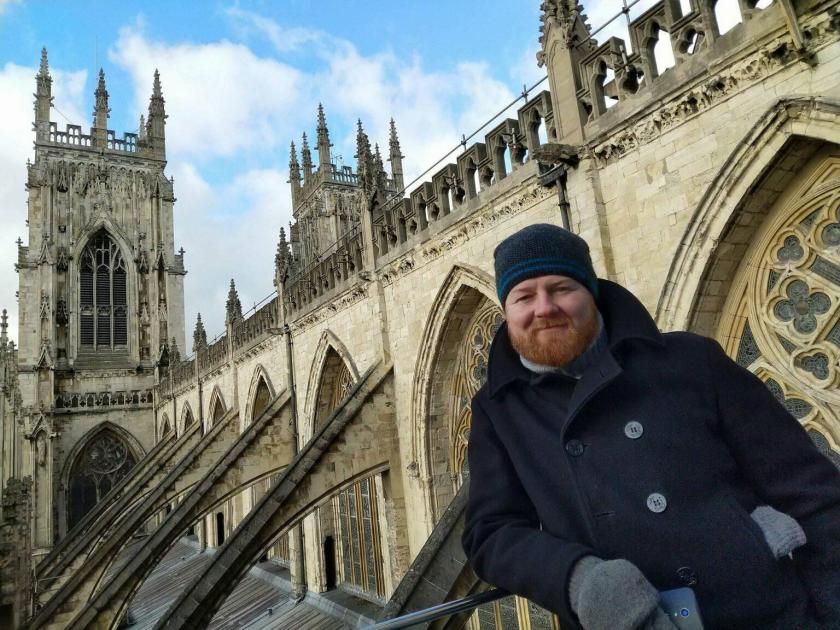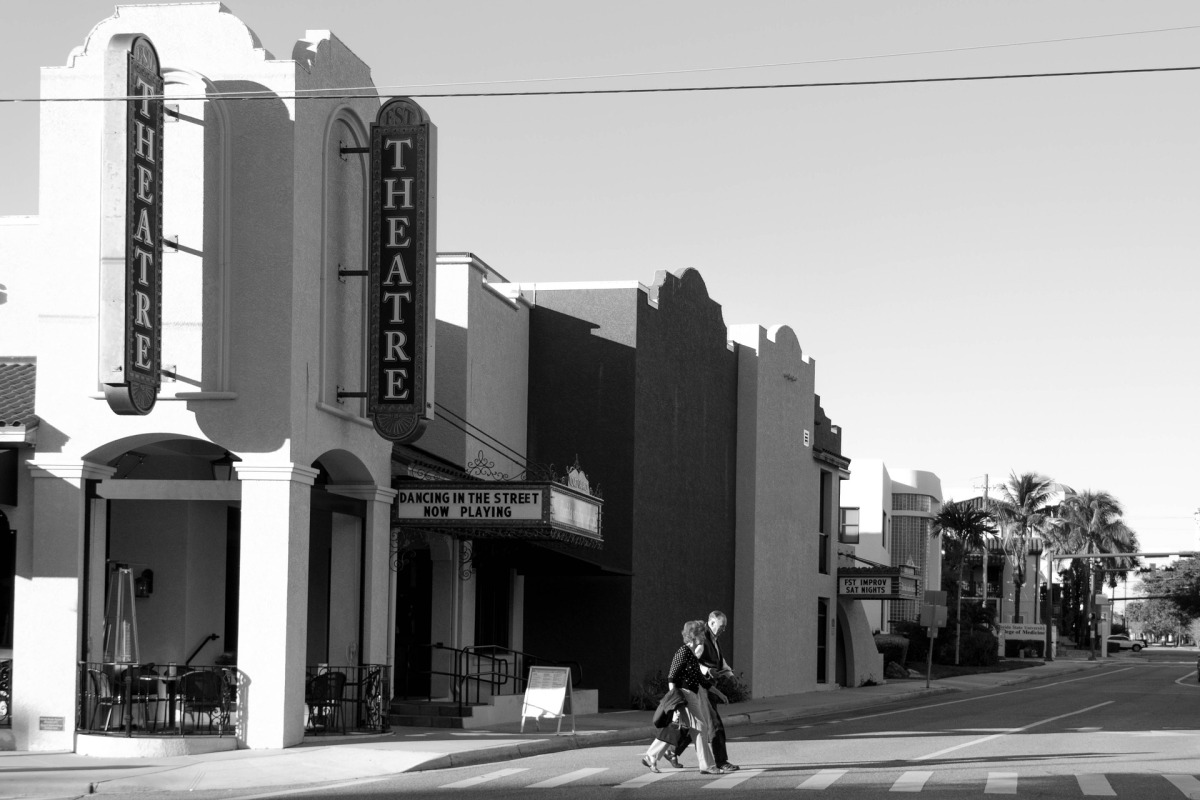Ray Nayler, whose story “Incident at San Juan Bautista” is on sale in our current issue now, visits the blog with insight—invaluable to emerging science fiction writers—on how to achieve that je ne sais quoi that is the atmosphere of a good science fiction story.
When I was a kid, I didn’t look for stories to read: I looked for worlds to live in.
We were feral kids, girls and boys with parents too caught up in their own slow-motion disaster marriages to notice or care what we were doing. So my friends and I spent long summer days and after-school afternoons walking around our sprawling town of Fremont, California, scraping together change to buy comic books and reading them in our “clubhouse”—an abandoned van down by the railroad tracks that sliced through the town. We watched two-dollar triple features of second run science fiction, horror, and action films at the crumbling old movie theater downtown, an art-deco cave that was almost empty most days: during quiet scenes, you could sometimes hear rats battling over ancient Milk Duds up on the balcony.
What we wanted most from the books and comics we read, and from the films we watched, were worlds to escape into. When I began writing, I didn’t start with writing stories: I started with trying to make up worlds for my friends. I started with describing the places we fantasized about living in—haunted forests, space stations, moon bases, drowned cities beneath the waves.
I think Sheila Williams puts it best when she says: “In science fiction the backdrop you work against is the size of the Universe.” That endlessly vast backdrop is what attracted me to the genre as a writer—the opportunity to work on a canvas as large or as small as I want it to be.
For me, short story writing is world-building in miniature, something like the Persian and Central Asian art of miniature painting: In a constrained space, I want to create the impression of a whole world, of which the reader is being offered just a glimpse.
I think of it this way: the reader and I are in a car together, moving down a road. The road is the plot. The reader is the driver, not me. But the secret is this: I built the road. I constructed the buildings, and all of the scenery along the route. Most of my work was done before the reader got here. All that remains is for the reader’s eye to take in the details of the landscape along the way: for them to turn their head a bit from the main plot and glimpse an alleyway where figures converse in semi-darkness, a plane passing overhead, a boat on the river, something moving behind the curtains of a house we pass. The plot is not enough: as the reader moves down the road of the plot, they have to feel like they are traveling through a real world. They need to feel they could turn the car off the main plot and drive elsewhere, knock on any door they pass along the way and have someone answer.
This illusion is accomplished through atmosphere. It can be hard to put your finger on what great atmosphere is, but we know it when we read or watch it. When I think of atmosphere done right in science fiction films, I think of Blade Runner, Alien, and Brazil. In the science fiction novel, I think George Orwell’s Nineteen Eighty-Four is one of the greatest examples. In horror fiction, the two novels by William Sloane, To Walk the Night and The Edge of Running Water are, for me, the absolute pinnacle. In horror films, The Shining, Suspiria, and Vertigo are my top choices. In short stories, I find myself returning to Joyce Carol Oates’ menacing masterpiece “Where Are You Going, Where Have You Been.” In crime fiction, Patricia Highsmith’s The Cry of the Owl is an extraordinary piece of paranoid world-building. In television, Twin Peaks does it perfectly. In nonfiction, it’s Joan Didion’s The White Album. I can give you a longer list, if you ask me for it, but these are my top choices.
Atmosphere is an interconnected system and escapes easy definition. But there are a few elements I think are worth noting:
- The suggestive detail: This is something that the reader’s mind is drawn to that gives them the feeling of a larger world just beyond the page. Sometimes seeming extraneous to the main storyline, it tugs at their attention, briefly distracting them and causing their mind to follow, like a deer glimpsed darting through the woods along the road. In Blade Runner, think of the eerie billboard advertisements hovering in the background: a piece of atmosphere so effective it has been imitated until it is now just a tattered dystopian trope. In Alien, think of the long initial sequence of images we are given of the Nostromo: the silent corridors, the empty space suits, the computer screen reflected in a helmet face shield, the isolated human details of a coffee cup, a good luck charm, a notebook: this is followed by a long, quiet sequence of the crew as they wake up unexpectedly, far from their destination. These scenes are, I will argue, the most important ones in the film, setting the tone for everything to come.
- The Uncanny: The uncanny is hard to define, but you know it when you see it. It makes the mind recoil slightly, then come back again like a tongue probing a damaged tooth. Think of the automatons in Blade Runner (home again, home again, jiggity-jig!) that greet Sebastian at his door, or the mechanical robin in Blue Velvet. Twin Peaks is filled with uncanny moments, which is perhaps why it has become such a cult—but some of its most effective moments of the uncanny are its most subtle: the fish in the coffee pot, the lingering shots of the forest or the waterfall pouring into the abyss, the Roadhouse torch-song. These moments stick in the reader’s (or viewer’s) mind and follow her—sometimes for a lifetime.
- Saturation: What all of the works above share as well is saturation: the mood, the feeling of the piece, continues from its opening moments to its closing scenes. In every case, the word feels complete, whole. Think again of Blade Runner or Alien. The soundtrack of Blade Runner is as essential to its atmosphere as the visuals. In Alien, the sound engineering is a masterpiece: in that opening sequence of Nostromo waking up, the sounds may be even more unsettling than the images. You can have plot without a theme, amazing characters without a great plot, or a great idea without any of those, but atmosphere demands consistency: a total saturation of tone.
- Condensation: This is a very personal definition, but for me what it means is a metaphor, image, or sign that, much like the symbols in dreams, has multiple meanings and implications, and is an amalgamation of many of the underlying themes of the work. In T.S. Eliot’s “Prufrock” there are many moments, but certainly the opening lines are a perfect example: “Let us go then, you and I, / When the evening is spread out against the sky / Like a patient etherized upon a table.” Or think of the owl in Twin Peaks, or the backward-talking dwarf. Think of the nursery rhyme in Nineteen Eighty-Four, or of the song the working-class woman sings while Winston Smith and Julia are meeting in their secret room. Or the mission and the bell tower in Hitchcock’s Vertigo. These symbols don’t resolve themselves: they just hang, forever, in the reader’s or viewer’s consciousness.
What you will notice about the above four elements is that they are not only common to all fiction and nonfiction stories: they are also common to memories and dreams. This is, I believe, at the core of their power. All of us have probably said to someone on waking up from a nightmare: “nothing happened, but it just felt like a nightmare.” That’s atmosphere.
This barely scrapes the surface of atmosphere, but what I’d like to do is just get you thinking of it, as my story in this issue of Asimov’s [on sale now], “Incident at San Jaun Bautista” is all about atmosphere. I began writing the story while on a long road trip through the American West. Toward the end of the road trip, we stayed in San Juan Bautista, a small town south of San Francisco and my hometown of Fremont. San Juan Bautista was briefly made famous as the location of the mission where Alfred Hitchcock filmed the climactic scenes of Vertigo. But perhaps more striking for me is the town’s history as a stop on the stagecoach lines heading from San Francisco to Los Angeles, and its saloon and hotel, still saturated with the gloomy, violent atmosphere of the Californian West of the 19th century. I’d wanted for a long time to write a science fiction story set in the period of American Western expansion, and to try to capture the surreal, brutal feel of that time, as well as the feel of William Sloane’s masterpieces of cosmic terror and Patricia Highsmith’s psychological labyrinths. I hope I’ve been able to do that here, and I hope you enjoy the tale. If you do, there are more stories you can read up at Raynayler.net, or come find me on Instagram or Facebook, where I’d love to continue the conversation.
I sincerely hope you enjoy the story, and that it gives you, however briefly, another world to live in.
—Ray Nayler


